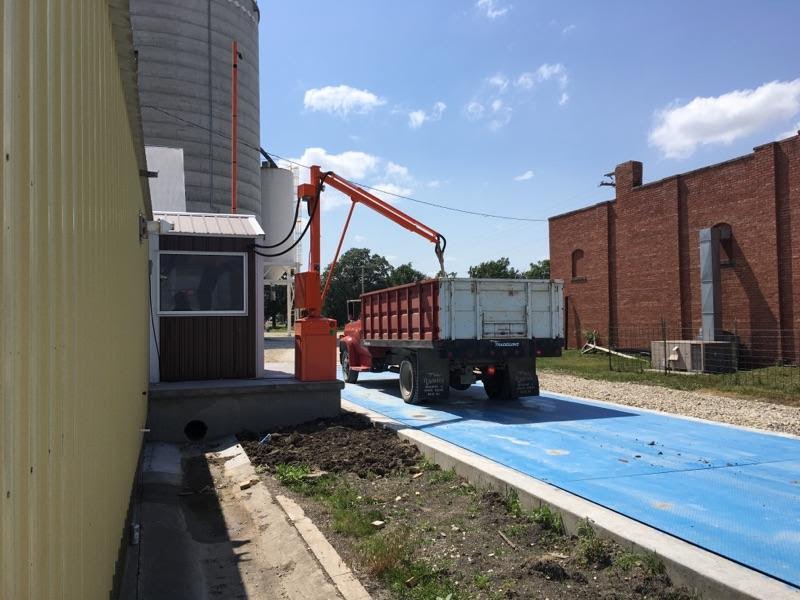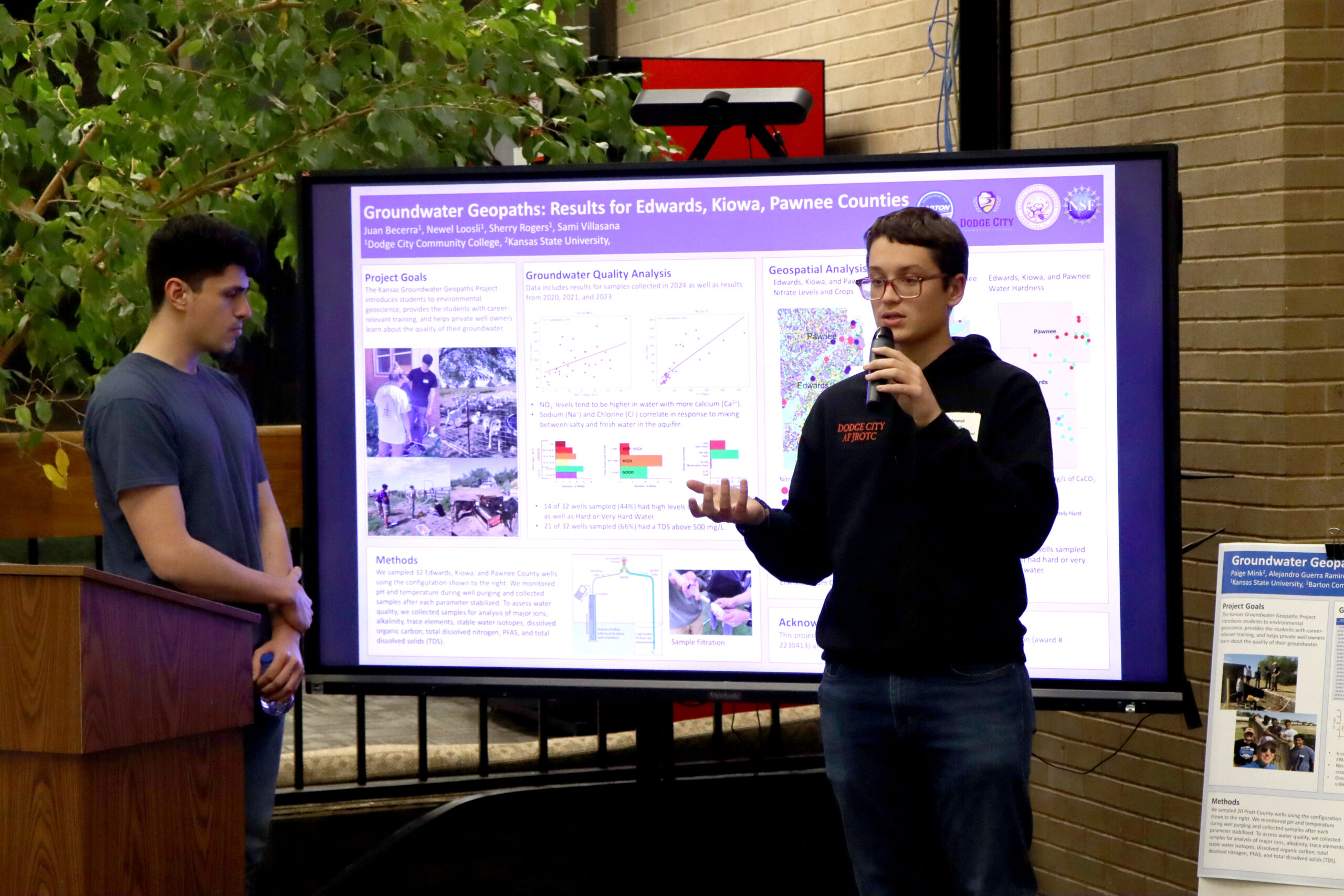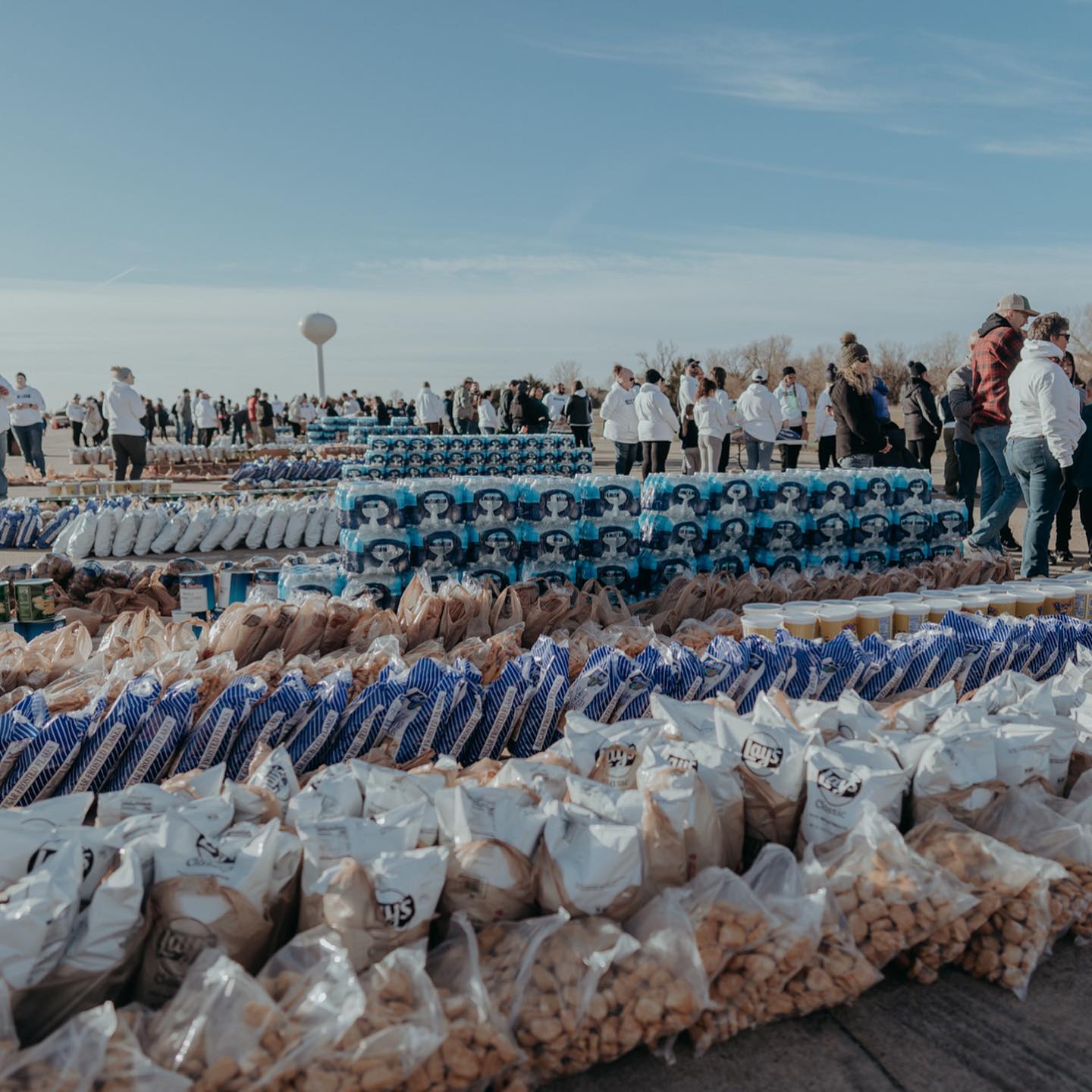In far western Kansas, wheat harvest is well behind schedule due to weather delays that have also brought hail damage. Despite the disruptions, elevators are generally seeing a better harvest than was anticipated this spring, although hail is hindering final yields for some and test weights are declining as producers wait for conditions to dry out enough to finish cutting.
Harvest is still going in western Wichita County, but most producers should wrap up by the weekend across the draw area for Scott Coop, according to grain merchandiser Brinlee McNary.
McNary said the crop looked pretty bleak in March, but thanks to spring rains they have taken in more bushels than they expected. Combines started rolling around July 4, about 10 days behind normal, but rain delays meant most producers spent a week out of the fields before resuming cutting.
The wheat has been high on protein, averaging 13 percent, but test weights have been falling from initial highs due to the rain, now at 58 pounds per bushel. Producers have seen a very wide range of yields from 20 to 70 bushels per acre.
Overall, McNary said Scott Coop will take in about half of their five-year average. That wheat will likely stay within the United States and be sent to flour mills or Kansas gluten plants, instead of traveling south on the rail to the Gulf of Mexico for export.
Harvest also started at least 10 days late in Sherman County, reported Brian Linin who farms near Goodland. About half of his wheat was destroyed, with crop insurance estimates of 0.6 to 1.7 bushels per acre. Linin’s 76-year-old father can’t remember having this much trouble getting wheat up in the fall in all his years of farming.
Despite the initial loss, three generations still came together to run combines this year – Brian, his father Brent and his son Blair. Test weights are averaging 58.5 pounds per bushel while proteins range from 11 to 12 percent.
Linin’s irrigated wheat is yielding 60 to 65 bushels per acre and his dryland wheat is yielding 50 to 60 bushels per acre. The range is wider than normal due to variation between heads that are not quite ripe and others that are overripe – three days ago there were still green heads in the field. Hail also hit Sherman County last week, but Linin’s wheat fields were largely spared.
“The only silver lining is that this wheat is this good,” Linin said, noting a big benefit from planting into stubble to set up yield potential. “The dryland fields are a big surprise.”
Linin will deliver his wheat to Frontier Ag or Scoular, which will go on to the domestic mill market.
Eric Sperber of Cornerstone Ag in Colby also noted that the Thomas County area has never started wheat harvest this late. The first combines finally started rolling on July 10. With high humidity, most producers can’t start cutting until early evening, but fields have finally really ripened up in the last two days.
He reported test weights are struggling, averaging just over 58 pounds per bushel. Overall protein is averaging 12.1 percent, but he’s seen from eight percent up to 14 percent. Recent hail did not zero out a lot of acres, but impacted fields are now yielding half of their pre-hail potential due to shattering. Yields range from 25 bushels per acre on hail-damaged fields up to 70 bushels per acre for dryland wheat.
Sperber said there has been a lot of variation within fields with original tillers ripening on time, followed by taller secondary tillers ripening a few days later and then suckerheads growing even taller and ripening a few days after that. Producers have faced a number of difficulties this growing season – abandoning some poor stands in the fall, battling weeds, dealing with wheat suffering from winterkill from a cold snap in December that affected wheat with poor root structure and disease pressure from rust on fields that did not have fungicide applied.
“It has been a challenging crop this year from planting to harvest,” Sperber said. “It’s been really weird.”
Harvest is now 50 to 60 percent complete and needs another seven days of average weather to finish up. Sperber said they need sunshine, otherwise, the current weather will mean harvest will take much longer. Overall, he expects they will take in about the same number of bushels as the five-year average, due to an increase in acres. He had expected more before hail struck the area.
“It’s amazing with the amount of moisture we had,” he said.
Harvest also has about a week left to go – if there’s no rain – for Mike Sieck near Edson in Sherman County. Harvest started on July 8 but has never really kicked into full swing because most days they cannot start until noon or later – some days as late as 4:00 in the afternoon – due to humidity and scattered rains.
Sieck did apply fungicide, a good decision as quite a bit of stripe rust has moved into the area in the last couple of weeks. Weeds are also a contention as they aren’t dying in the cooler weather.
Hail has also hit the area hard. Sieck will still harvest some of the hail-damaged fields for seed wheat, even though yields have decreased to 25 bushels per acre. His average for dryland wheat is 45 bushels per acre but ranges widely. Test weights are decent at 59 to 61 pounds per bushel and protein is excellent at 13.5 to 14.5 percent.
He reported WestBred’s WB 4422, a replacement for Grainfield, has done well, as have the Kansas Wheat Alliance-developed varieties – KS Providence, KS Territory and KS Hamilton. North of Bird City and St. Francis, producers caught more snow and wheat is yielding even better, some places as high as 90 bushels per acre on dryland fields.
With varying yields and weather delays, producers are ready to close the book on the 2023 wheat harvest. As they continue cutting, Kansas Wheat will continue to share results from the field with the next harvest report scheduled for July 20. Look for a special edition harvest report on the hard white wheat crop on July 19.
_ _ _
The 2023 Harvest Report is brought to you by the Kansas Wheat Commission, Kansas Association of Wheat Growers, Kansas Grain and Feed Association and the Kansas Cooperative Council. To follow along with harvest updates on Twitter, use #wheatharvest23. Tag us at @kansaswheat on Facebook, Instagram and Twitter to share your harvest story and photos.



